Which is better for bedding: percale or satin?

Today, buying bed linen becomes a daunting task, not because of a shortage, but, on the contrary, because of the breadth of choice. Manufacturers use both traditional fabrics, familiar to the older generation, and technological developments of recent years. Interesting exotic novelties have appeared: fabrics from bamboo and eucalyptus fibers. Mixed fabrics with a heterogeneous composition of threads are actively used. But the undoubted favorite among the mass consumer was and remains cotton underwear. Let us dwell in more detail on two types of cotton fabric: satin and percale.
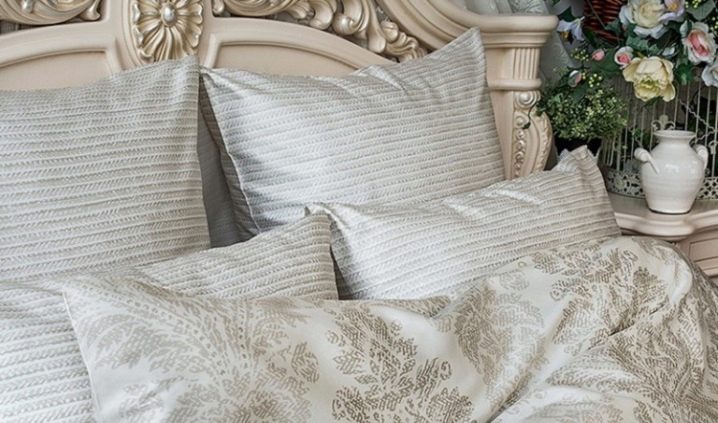
Composition and varieties of satin
By themselves, both satin and percale are simply different ways of weaving. Due to variations in the arrangement of the warp (vertical) and weft (horizontal) threads, the fabric receives completely different mechanical and technological properties. Its appearance also depends on it. Satin is made from double twisted yarn. Long staple cottons are used. Twisted weft threads, intertwined with the main sparse pitch, create a silky right side of the fabric, the wrong side remains matte.
The composition can be either 100% cotton or non-uniform. Initially, satin, leading its history from the Chinese province of Quanzhou, from where the ships of overseas merchants carried it around the world, was a fabric made of silk fibers of a special dense weaving. Then the Chinese applied this method to cotton threads and obtained an excellent, inexpensive fabric with a shiny satin surface that imitates luxurious silk. Modern technologies have made it possible to expand the range of satin fabrics. Today, several types are distinguished, depending on density, composition, processing.
- Plain and printed satin - cotton fabrics with a density of about 85-100 and 150 threads per centimeter, respectively. This is not a very high density, so inexpensive bedding is sewn from such satin. For very budgetary options, pigment coloring is used, affecting only the surface of the material, such products can fade and fade over time. Better reactive dyeing penetrates deep into the fibers and leaves the pattern on the fabric bright and clear even after many washes.
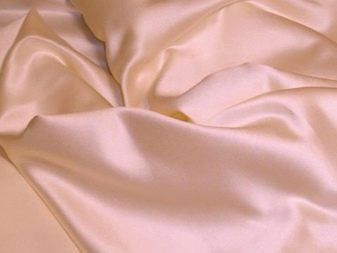
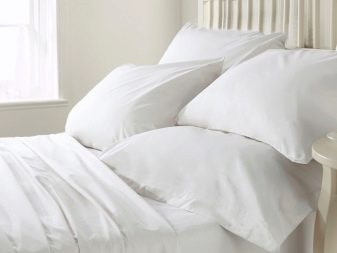
- Printed satin - density up to 170 threads, in fact it is the same printed fabric, but it is dyed taking into account the dimensions of the final product: pillowcase or duvet cover. Effective and harmonious sets with an unusual design are obtained. Cotton fibers undergo a mercerization process - treatment with caustic alkali to increase the strength of the threads and better fix the subsequently applied paint.
- Jacquard satin - this fabric combines the virtues of silky satin and traditional jacquard weave, creating luxurious embossed patterns on both sides. A density of 170-220 threads per square centimeter is used, so the fabric will be especially wear-resistant. Jacquard-satin is made of 100% cotton, and it can also be mixed: with the addition of viscose or polyester.
A small addition of synthetics gives additional elasticity and strength, simplifies washing and drying, and reduces shrinkage. The jacquard satin bedding set looks very presentable.
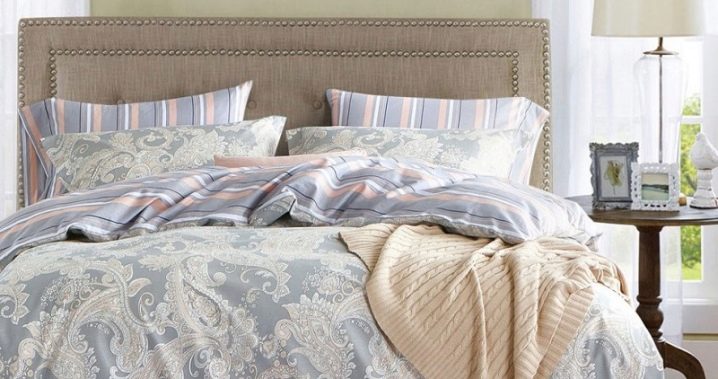
- Stripe - jacquard satin with stripes and geometric shapes.Compared to a typical jacquard with a rich floral ornament, stripe is its strict version. It is ideal for premium kits. The alternation of matte and satin stripes both from the face and from the inside makes the lingerie especially exquisite.
- Mako - for its manufacture, long-staple cotton is used, which is grown in Egypt without the use of pesticides. Density - about 220 threads. The result is an extremely dense, durable, but light and thin fabric. Due to environmental friendliness and excellent technological qualities, only luxury lingerie is produced from mako-satin.
- Silk satin - an expensive option with the addition of silk threads.
- Polysatin - blended or synthetic fabric that visually resembles a natural analogue with a silky front side. Dries very quickly, does not shrink or deform, retains color well. Sets with 3-D printing are often sewn from polysatin. The disadvantage is poor breathability. Can be electrified.
- Twill satin - a weaving method that combines two methods, which makes this fabric slightly looser and less dense than classic satin.

Advantages and disadvantages of satin
Regardless of which fibers are used, satin weave fabric will be dense, soft and silky, with a slightly shiny surface. This distinguishes it from other fabrics: ordinary cotton, chintz, calico. Satin bedding has the following advantages:
- silk-like appearance, but lower price;
- easy care: the fabric practically does not wrinkle, dries quickly;
- high wear resistance: for luxury categories with a high density - up to 300 washes;
- natural satin is an environmentally friendly material, does not electrify, hygroscopic, breathable;
- perfectly retains heat, such a bedding set is ideal for autumn and winter;
- the matt bottom side does not slide on the base of the sofa or mattress, unlike silk.
Of the shortcomings, it can be noted that sometimes the satin smoothness of the front side of such underwear can be uncomfortable - silk pajamas will slide over it. Satin fabrics (with the exception of mako satin) may seem too hot to some for a summer nap.
Well, the cost of linen made of high-quality types of satin (jacquard, stripe, mako) is much higher than that of ordinary cotton sets.
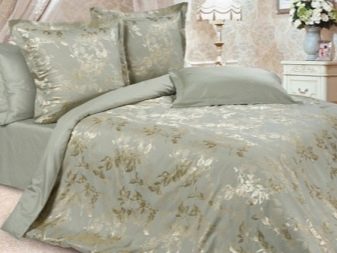
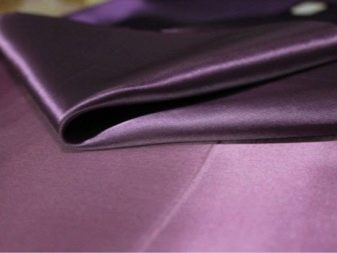
Percale: composition and varieties
The basis of natural percale fabric, which was invented in India, is a long-staple cotton. The untwisted threads are very closely intertwined crosswise, forming a smooth, thin fabric. Additionally, the fibers are treated with a harmless bonding compound - a charge, this makes the fabric incredibly durable and not subject to wear and damage, removes lint.
Due to these properties, percale was previously often used by aviators for covering aircraft and sailors for making sails, and it was also used for sewing tents. Percale bedding is a high quality, expensive set, because this fabric is considered one of the best for the production of bedding. Pillowcases are also sewn from it: dense weaving does not let down and feathers go out.
In terms of composition, percale is:
- 100% cotton;
- with the addition of linen threads;
- with a small proportion of polyester.
Mixed options are more affordable. Polyester adds elasticity to the fabric, it is less wrinkled.
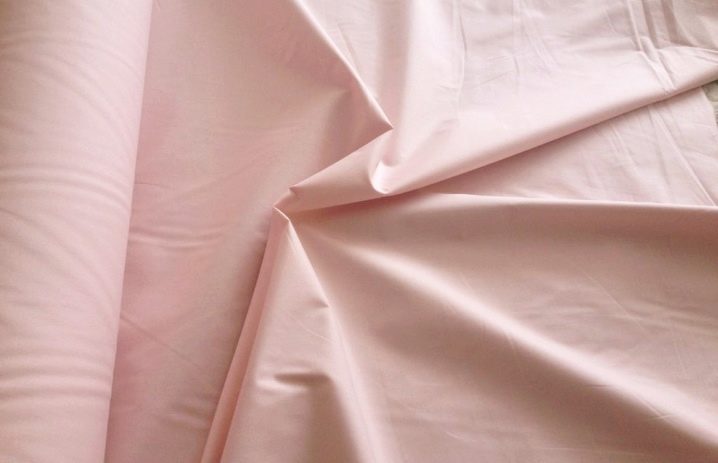
Advantages and disadvantages of percale
Paints perfectly fit on the velvet surface of percale, so any design solutions are applicable to this fabric. Other benefits are:
- very high wear resistance - it is provided by glue impregnation, so the linen can withstand up to 1000 washes, does not form pills;
- retains the brightness of colors, they do not fade or fade;
- good air permeability, the linen "breathes";
- hygroscopicity;
- gives a pleasant tactile sensation, does not slip;
- the natural composition is suitable for allergy sufferers.
But this fabric is not perfect either. The special composition, which gives it unprecedented strength, complicates care, makes the fabric capricious when washing. Percale needs to be ironed - it is a wrinkle material.
Disadvantages:
- difficulty in leaving, since you need to wash at medium temperatures, without soaking, bleaching and with a reduced spin speed (in a wet state, the percale crumples strongly);
- ironing is recommended not at maximum temperatures, not higher than 150 degrees;
- high price.

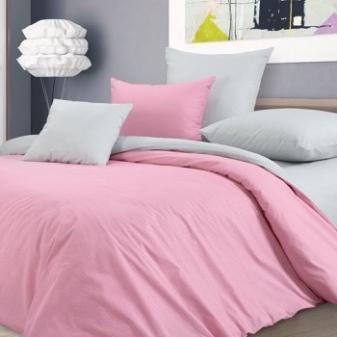
What's better?
Everyone chooses for himself which is preferable: satin shine of satin or velvet percali. Percale will pleasantly cool your body in summer, and satin will warm you in winter. Satin loses in strength, but is easy to care for: it does not require ironing and restrictions on washing. But the touch of smooth and non-slip percale is more familiar.
The price of quality sets made from these fabrics will be approximately equal and higher than that of products made from other types of cotton, for example, calico. But satin products have a wider price range: you can buy both a very inexpensive set made of loosely woven fabric, or spend a lot on a luxurious luxury set made of jacquard-satin.
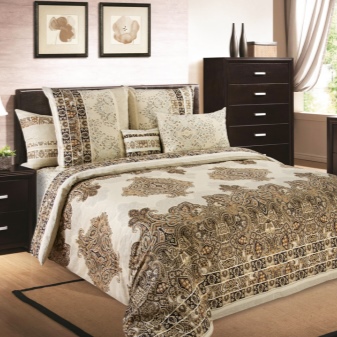
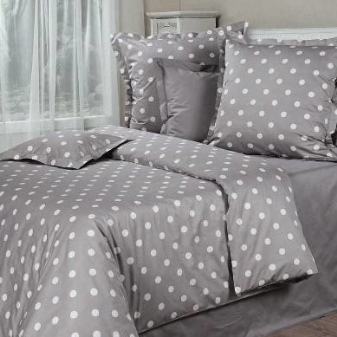
Reviews
Satisfied customers who have opted for a percale bedding set note that this linen can withstand multiple washings, remaining as bright, smooth and durable. Negative reviews are often associated with incorrect labeling or an unscrupulous manufacturer who passes off cheaper coarse calico for percale or deliberately incorrectly indicates the composition, hiding a synthetic additive. The same problems are sometimes encountered among buyers of satin linen, when polysatin is sold under the guise of natural.
See the next video for more details.













The comment was sent successfully.